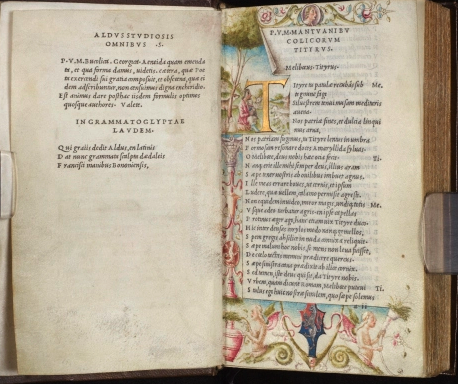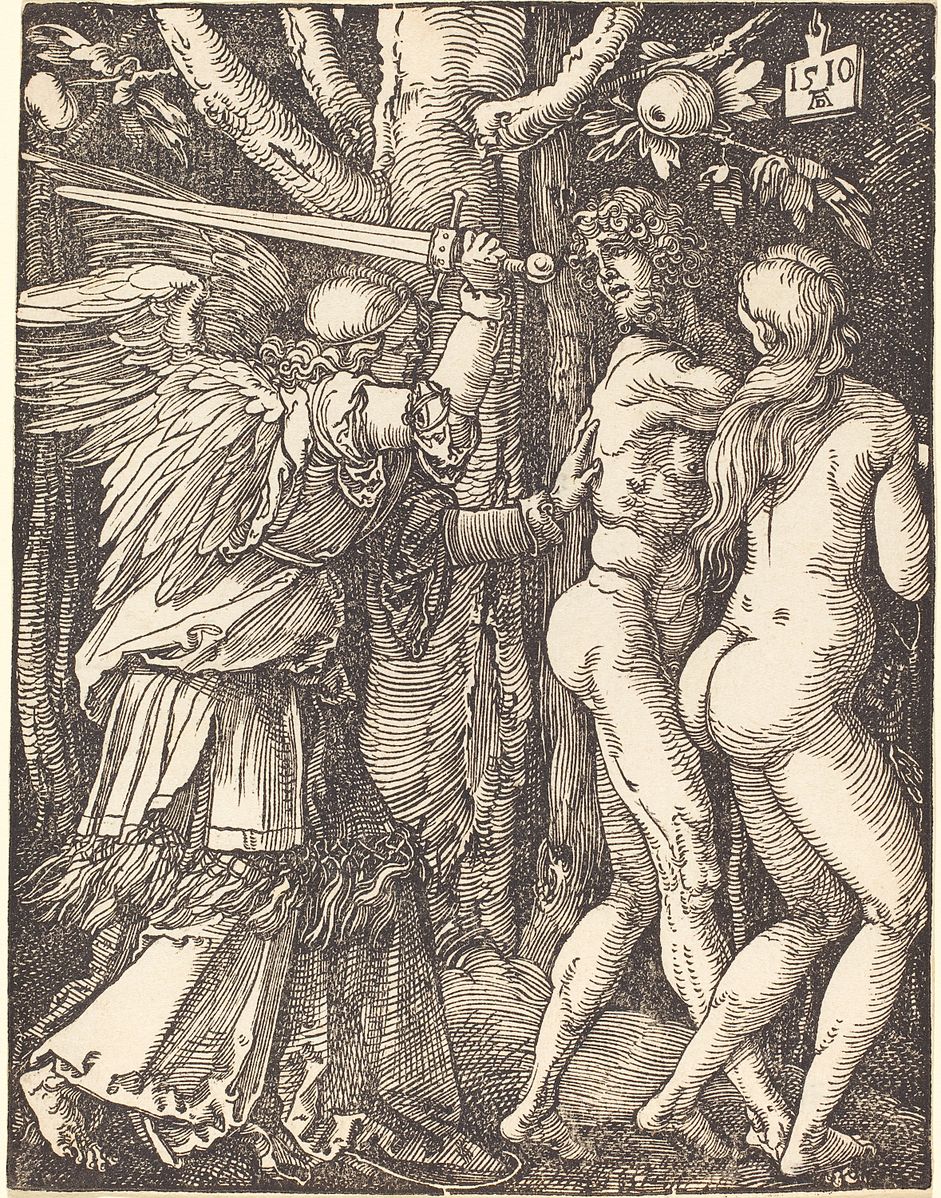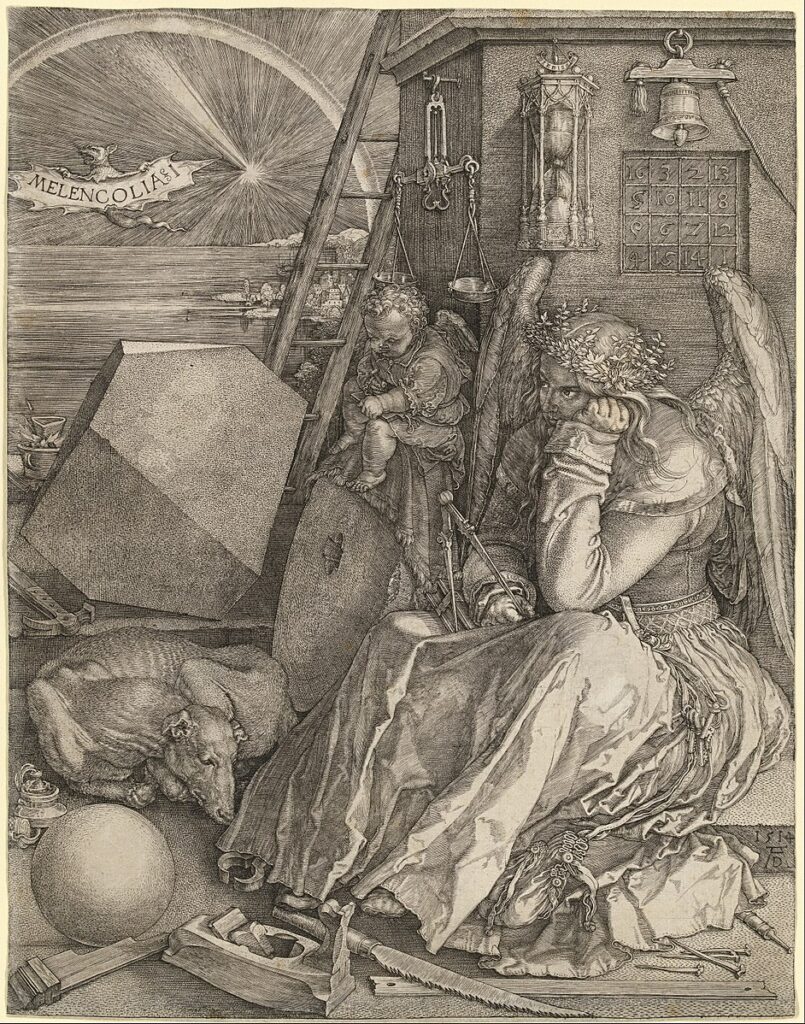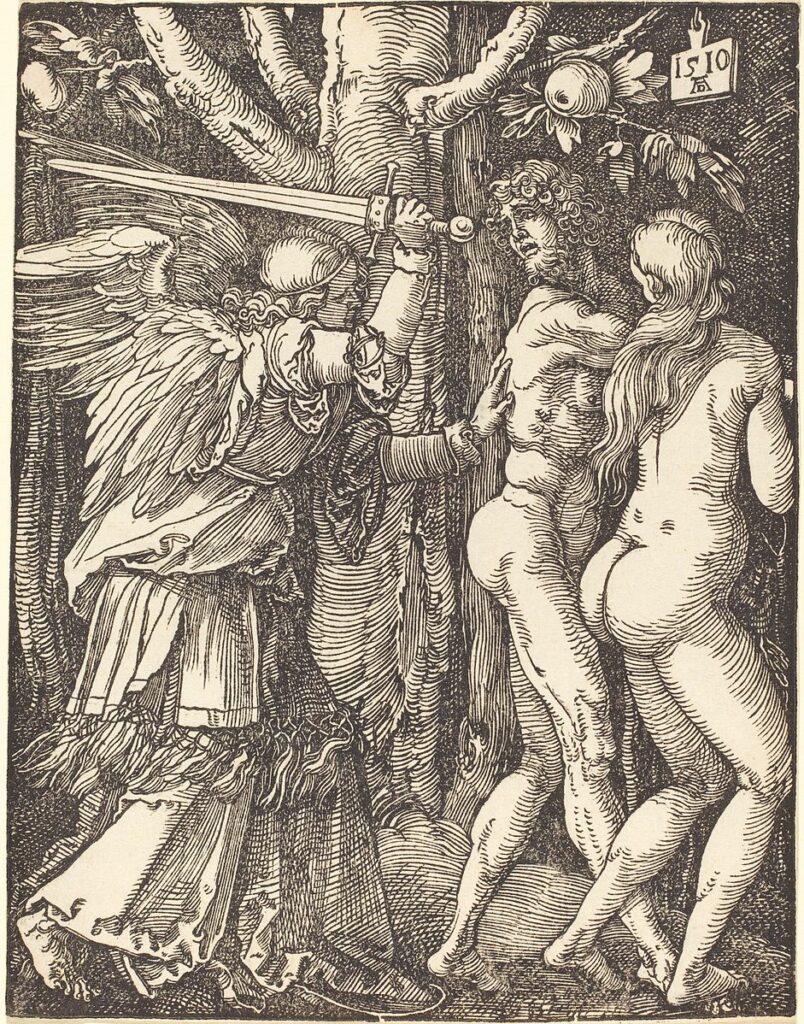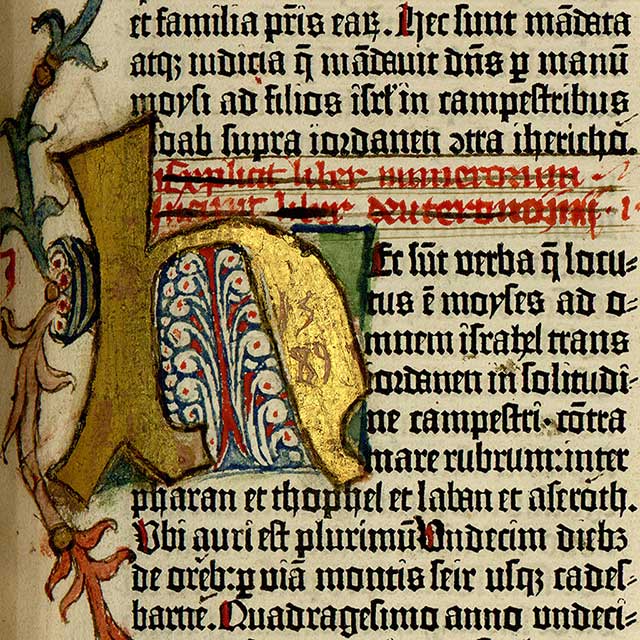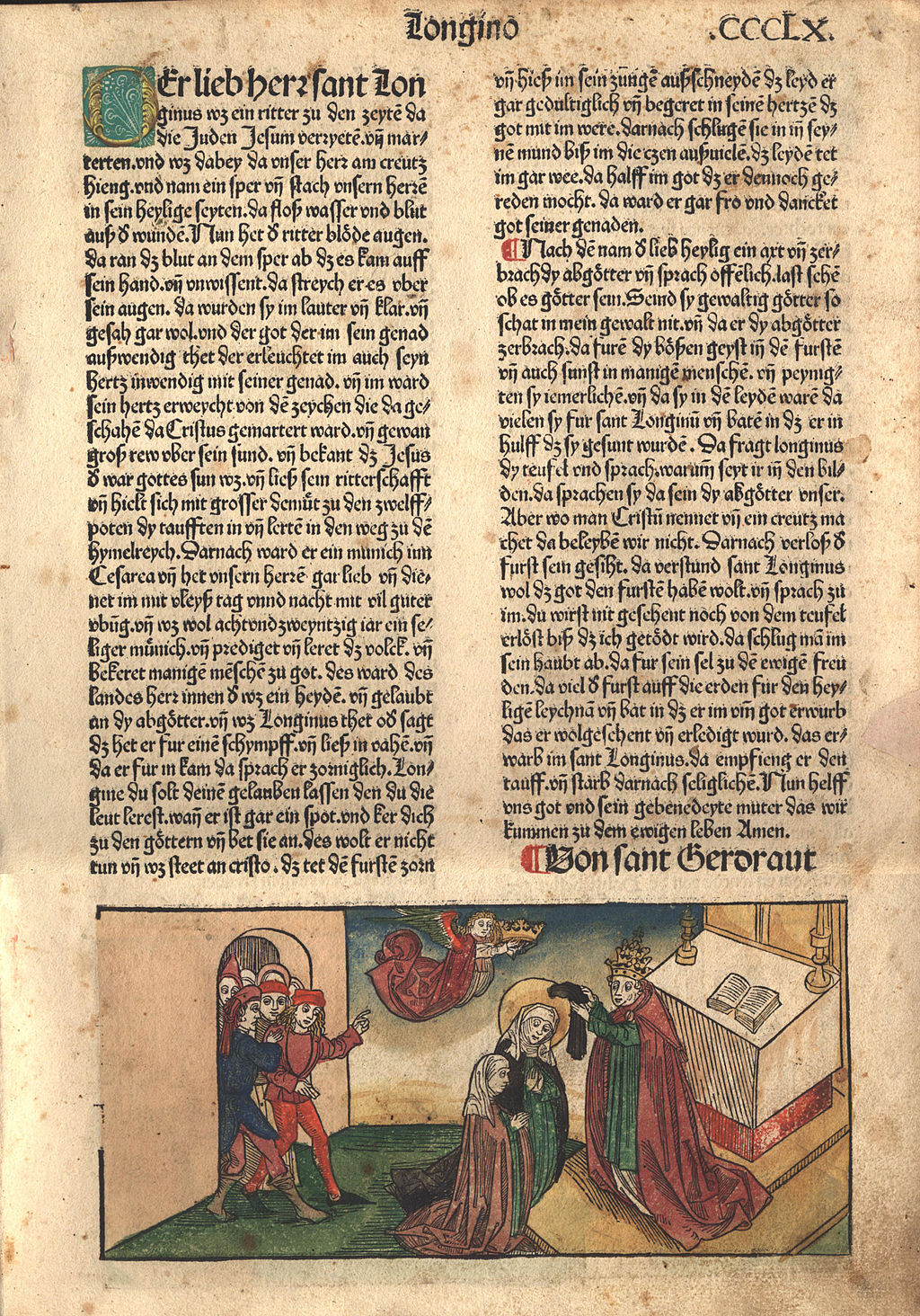Erhard Ratdolt (1442–1528), Venice
Erhard Ratdolt (1442–1528) was an early German printer from Augsburg.[1] He was active as a printer in Venice from 1476 to 1486, and afterwards in Augsburg. From 1475[1] to 1478 he was in partnership with two other German printers.[1]
The first book the partnership produced was the Calendarium (1476), written and previously published by Regiomontanus, which offered one of the earliest examples of a modern title page. Other noteworthy publications are the Historia Romana of Appianus (1477), and the first edition of Euclid’s Elements (1482), where he solved the problem of printing geometric diagrams, the Poeticon astronomicon, also from 1482, Haly Abenragel (1485),[2] and Alchabitius (1503). Ratdolt is also famous for having produced the first known printer’s type specimen book (in this instance a broadsheet displaying the fonts with which he might print).[3]
His innovations of layout and typography, mixing type and woodcuts, have subsequently been much admired. His graphic choices and technical solutions influenced also those of William Morris.[4]
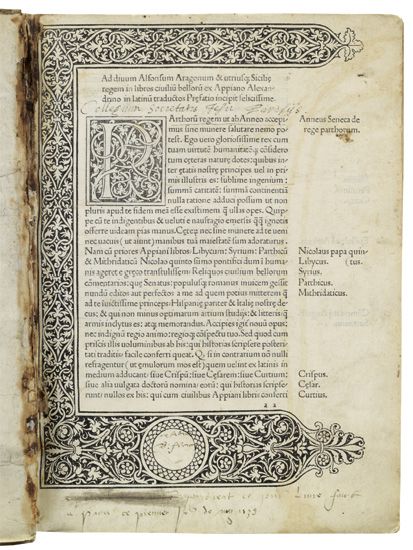
APPIANUS. Historia Romana. Latin translation by Petrus Candidus Decembrius. Part 2 (of 2): De bellis civilibus [and other texts]. [211] (of [212]) leaves: lacks initial blank. Roman type. Woodcut white-on-black three-quarter border on a2r and ornamental initials throughout. 4to, 278×205 mm, early limp vellum with remnants of thong ties; front free endpaper reattached causing slight adhesive discoloration in title gutter, occasional light marginal foxing and soiling. (Venice: Bernhard Maler, Erhard Ratdolt and Peter Löslein, 1477)
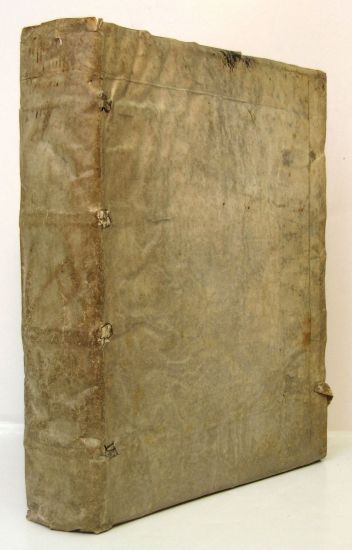
APPIANUS. Historia Romana. Latin translation by Petrus Candidus Decembrius. Part 2 (of 2): De bellis civilibus [and other texts]. [211] (of [212]) leaves: lacks initial blank. Roman type. Woodcut white-on-black three-quarter border on a2r and ornamental initials throughout. 4to, 278×205 mm, early limp vellum with remnants of thong ties; front free endpaper reattached causing slight adhesive discoloration in title gutter, occasional light marginal foxing and soiling. (Venice: Bernhard Maler, Erhard Ratdolt and Peter Löslein, 1477)

Appian’s Historia Romana
Erhard Ratdolt, 1477
APPIANUS (c.95-165). Historia Romana and De bellis civilibus. Translated by Petrus Candidus Decembrius. Venice: Bernhard Maler (Pictor), Erhard Ratdolt, and Peter Löslein, 1477.
First complete edition of Appian’s Roman History, the Stirling Maxwell copy. According to Redgrave, Ratdolt’s biographer, “to my mind there are few printed books of any age which can be compared with the Appian of 1477, with its splendid black ink, its vellum-like paper, and the finished excellence of its typography.” Composed in Greek, Appian’s history originally comprised 24 books on the history of Rome up to the reign of Vespasian, but only about half the work survived to the age of print. Pier Candido Decembrio, his humanist translator, divided the extant books into two parts: Historia Romana, on the early history of Rome, and De bellis civilis—a vital source for the restless and violent years preceding the dissolution of the Roman republic. This is one of Ratdolt’s earliest Venetian imprints, following only Regiomontanus’s Calendarium, and contains the first use of both fine woodcut border pieces. Part II only first appeared from the press of Vindelinus de Spira in 1472. H 1307* [II, I]; GW 2290; BMC V 244; BSB-Ink A-651; Bod-inc A-363; Essling 221; IGI 763; Goff A-928; ISTC ia00928000.
Two parts in one volume, royal half-sheet quarto (253 x 186mm). 344 leaves. One full-page woodcut border and one partial woodcut border, large and small woodcut initials with vine pattern (portion of initial blank repaired, losing part of a manuscript inscription, light spotting and toning, some very light dampstains). Brown morocco gilt by Leighton with stamped seals of Stirling Maxwell, Maxwell seal on inner board, gilt edges (worn at extremities). Provenance: marginalia (some trimmed), partially cropped early ownership inscription on flyleaf, and faint erased inscription on first text leaf – Johann Christoph Wolffskeel (inscription and initials, fl. c.1550) – Munich Royal Library (stamps, including duplicate mark) – Sir William Stirling Maxwell (1818-1878; bookplate and binding) – acquired from Lathrop C. Harper, Inc, New York, 12 July 1957.








Famous incunabulum, one of the first books that appeared with woodcut ornaments: the borders for both the Historia Romanaand De Bellis Civilibus are an intricate pattern of vines and acanthus leaves, the first here printed in red, a rare process seen only in a very few copies. Usually, these ornaments are simply printed in black. Also, this is the first book with ornaments on a black background, including the large initial on the first page. Contents-wise, this is the first complete edition of the surviving portions of Appian’s Roman History, written in Greek and translated into Latin by Petrus Candidas Decembrius. “Appian of Alexandria (ca. 95-ca. 165) was a Greek historian with Roman citizenship who flourished during the reigns of Emperors of Rome Trajan, Hadrian, and Antoninus Pius. He was born in Alexandria. After holding the chief offices in the province of Aegyptus (Egypt), he went to Rome c. 120, where he practised as an advocate, pleading cases before the emperors (probably as advocatus fisci). It was in 147 at the earliest that he was appointed to the office of procurator, probably in Egypt, on the recommendation of his friend Marcus Cornelius Fronto, a well-known litterateur. Because the position of procurator was open only to members of the equestrian order (the ‘knightly’ class), his possession of this office tells us about Appian’s family background. His principal surviving work ( Ρωμαϊκά Romaiká, known in Latin as Historia Romana and in English as Roman History) was written in Greek in 24 books, before 165. This work more closely resembles a series of monographs than a connected history. It gives an account of various peoples and countries from the earliest times down to their incorporation into the Roman Empire, and survives in complete books and considerable fragments. The work is very valuable, especially for the period of the civil wars. T he Civil Wars, books 13-17 of the Roman History, concern mainly the end of the Roman Republic and take a conflict-based view and approach to history. Despite the lack of cited sources for his works, these books of the Roman History are the only extant comprehensive description of these momentous decades of Roman history.” (Wikipedia). The translator’s division of the extant books into two parts differs slightly in its order from the Greek originals. Leaf numbering is [a-c 10 (a1 blank discarded, as usual) d12, e10-x10; a-i 10 (a1 blank) k-m 8, o10]. a2r is the translator’s dedication to Pope Nicholas V. The blank 11-line space on c1v and all of c2r in part 1 was left by the printers to indicate a gap in the extant manuscripts. The partnership of the printers Erhard Ratdolt and Bernhard Maler and the corrector and editor Peter Loslein lasted from 1476 to 1478. The exceptional beauty of the books printed at their press is characterized by the use of a series of very fine woodcut borders and initials along with a strikingly clear and pleasing roman type.
Although traditionally credited to Ratdolt, the design of the woodblocks and possibly of the type is more likely to have been the work of Bernhard Maler who was in charge of the press. When Ratdolt set up his own press in 1480, he apparently brought only one of the border blocks with him, the one that appears in part II of the present work, which he used again for the 1482 Euclid. The border used in part I appears in this edition only. Provenance: inscribed on the last text page blank verso by the Venetian senator Angelo Gabrieli (1470-1532), writer of a little-known 16 pp. treatise, Libellus hospitalis munificentiae Venetorum in excipienda Anna regina Hungariae (1502). “Anna of Foix-Candale (1484-1506) was Queen of Hungary and Bohemia as the third wife of King Vladislaus II. She incurred debts in Venice and was said to favour this city all her life” (Wikipedia). A few marginalia in a neat old hand. Slight wear to spine ends; first ornament border ever so slightly shaved at the top, a few leaves with minimal marginal spotting but generally remarkably clean: a wonderfully preserved copy. BMC V, 244; Essling, 221; IGI, 763; Redgrave, Ratdolt p. 28 n° 3; Sander, 482.







